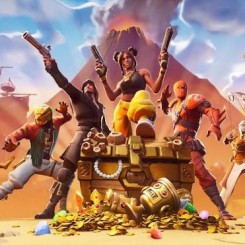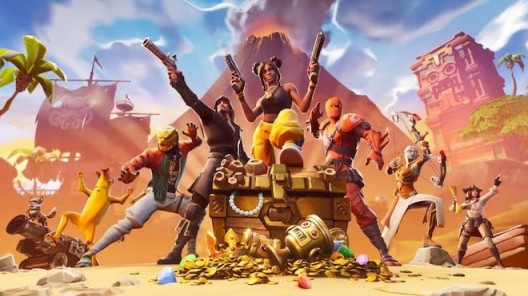by Chris Moore
With hundreds of millions of people in self-isolation and quarantine, hundreds of thousands hospitalized and tens hundreds of thousands dead, and the world economy stopped, talk of art seems trivial if not deluded. But art is expression and we need to speak and to speak up, all the more when threatened and isolated. Art is about asking questions, and that won’t stop, but the places in which we ask them will change.
So what will the the contemporary art market look like?
The art world as we know it has changed forever
Art has not vanished and making art has not ceased but Art Basel Hong Kong was cancelled. In March, TEFAF Maastrict’s “VVIP” sales were down 29% and US visitors too. Art Basel itself has been moved from June to mid-September, along with numerous other art fairs and events like Gallery Weekend in Berlin (now September 13-15). The huge question, of course, is whether any large exhibition or art fair can or will take place in September. Even if they do, will anyone go? Will US collectors fly to Basel? Will they risk a sudden 2-week quarantine? Even if they do, will they still feel like spending? Will they still have anything to spend even?
No one knows.
Rat Year
Looking to China, will there still be international visitors in November for West Bund and ART021 in Shanghai? Will international galleries still want to come, even if they still have the resources to do so? Last year most international galleries sold poorly at both exhibitions, and when they did, it was mostly to collectors from the U.S., Japan, Korea and Taiwan; not local collectors. When they did sell to locals, there was the problem of payment (many sales were frustrated in the following months). For major collectors with foreign bank accounts it was less of a problem but for the great art buying majority China’s strict capital controls mean it is increasingly difficult to be able to pay for international artworks over USD50,000 (though some managed to pay in cash). All this at time when local confidence in local artists is waning. Some say it’s because, on average, local art isn’t as good as its foreign counterparts. This is twaddle. Western artists are trained how to speak; Chinese artists learn to stay quiet. Moreover, Western galleries, curators, museum directors, art writers and even art PR are all still very much better trained, more competitive, more professional. And there’s just more of them. Berlin has more serious art galleries than the whole of China and Hong Kong put together. Its population is just 3.7 million people (Basel just 171,000).
And then there’s the China-US trade war, which briefly receded on the back of a sticky-tape trade deal, now rapidly morphing into a ‘cold trade war’ due to the disingenuous Co-vid 19 blame game, a conflict which could soon easily lose the word ‘trade’.
Survivor
The line between private museum and private gallery is often relative but always opaque, particularly in China. Who will survive? Thankfully, one way or another the key founding galleries of the Mainland China art scene will all get through – Beijing Commune, ShanghART, Long March Space, Tang Contemporary, Vitamin Creative Space. So will the galleries backed by serious collectors, such as AYE Gallery. The international galleries that have strong local networks will be fine too, including Continua, Perrotin, Lisson, Almine Rech and Galerie Urs Meile. For everyone else survival is going to be a lottery. In Hong Kong, the rental costs of H Queens and the Pedder building now look like a sick joke. Here too though, the majors will be ok, including Gagosian, David Zwirner, Pace and Axel Vervoordt. That former French prime minister, Dominique de Villepin, has just opened a gallery with his son Arthur on Hollywood Road is a confidence vote for the fragrant island but one with unique characteristics. The galleries in the more affordable Wong Chuk Hang district perhaps have a better chance than those in Central but it’s still going to be very tough. However, summer will no doubt also bring the return of the protests, closely followed by an ideological heavy hand. Back on the Mainland expect to see interesting smaller galleries emerge in Shenzhen and more regional centers like Nanjing and Chengdu (in Wuhan maybe not so much, more’s the pity).
(Former police officer Scottie (Jimmy Stewart) spies on Judy / Madeleine (Kim Novak) visiting the art museum (Alfred Hitchcock’s Vertigo, 1958)
Museums or mausoleums?
Many museums will close, public and private. Some shouldn’t have been opened in the first place. Some will be sorely missed, whatever the reasons may have been. But that was already the case, from SiShang in Beijing to Zendai in Shanghai. Some of the best we hope will continue, from How Art Museum and RAM in Shanghai, Sifang in Nanjing and to Red Brick and Faurschou in Beijing. The UCCA under the leadership of Phil Tinari has become one of the great survival stories of the art world. It will survive this too. In fact, it is because of institutions like UCCA that we have hope museums in China will come back faster and better than we can currently predict (opening May 21 is UCCA’s new show “Mediations in an Emergency“). We look forward to the new Jupiter Museum of Art opening in Shenzhen this year and M+ in Hong Kong next year. We hope too that the government will eventually give all these museums the freedom to not only survive but prosper. Well, hope springs eternal.
Unfortunately, some prominent artists, curators, and collectors will also survive who really shouldn’t. Evolution is not always about the fittest and the strongest, let alone the most beautiful or most interesting, but often just about the most ethically flexible, the most ingratiatingly flattering, and just dumb luck too.
(Cao Fei, Haze and Fog, 2013, trailer. Courtesy MoMA and Vitamin Creative Space)
Online ad infinitum
Will the art world move online completely, occupying VR rooms and AI processors? No. Just look at the disastrous Art Basel online viewing rooms. As Dominique Lévy said to CNN Money recently “An interesting experiment that doesn’t work.” To be blunt, you didn’t buy the art so why buy the hype?
The freedom to explore the Louvre from half a world away is amazing but it is a poor second best to being there. And for less famous museums? ….. well, meh. The same with private galleries – online viewing rooms are now a reality but an underwhelming one. We stare at our computer screens enough already. Unless galleries are going to put porn or Joe Exotic in their viewing rooms, don’t hold your breath for a digital Renaissance.
(Ran Dian hopes Epic Games will include Art Basel in the next season of Fortnite. C’mon, you know it makes total sense.)
Similarly, online art auctions can work at USD5,000 but much less so at USD50,000. But who cares about auctions anyway? It’s not like they contribute anything to making art or the artists who make it. This must change.
Paper magazines are dead. Long live art critics!
Art publishing was already in deep trouble. Now it needs a ventilator but can’t find one.
With the exception of a few legacy publishers like The Art Newspaper and Artforum, there will be little in the way of a business model for paper art magazines to survive without a sugar daddy. The inherent compromises between sponsorship and independent writing are increasingly impossible to balance with production costs. We are also extremely skeptical that online databases like Artsy will continue to survive in the absence of Trustafarian cash injections. Paddle8 has already succumbed. So we will be back to just Artprice and Artnet.
Will there be art writing? Of course. Will it be good? Much less certain. Then again, a lot of writers and the universities that produced them, have a lot to answer for their suicidal dive into Daedalian irrelevance. It would be nice if great art criticism was also fun or even just not painful to read. Hiding behind obfuscation must end. This doesn’t mean there is no space for complex writing but it has to have a point. Rosalind Kraus is complex because she is good but others are complex because they are not.
So?
We need opinions not only to count but have weight too. Facebook likes and Instagram hearts are no more reliable than pumped and primed auction results. Mere popularity comes and goes, consumed and processed faster than fast food. In the age of social media, with the whole world ‘roasting’ and ‘flaming’, it is astonishing how bland art became. Art stopped being risky and became just entertainment. Where’s the anger? The subversion? The plain weird? Be prepared to be unpopular, ugly and wrong. And be prepared for people to be unpopular, ugly and wrong about you too.
And now?
Is it all doom and gloom? Actually no. Out of catastrophe will come great change. The seeds of the future were already germinating. Expect the crossover between art and science to continue and spread and the lines between formerly discreet and disparate disciplines to become increasingly porous. There will be far greater cooperation, not just between artists but also curators. There will be far fewer art fairs and those that remain will maybe get back to their roots as genuine markets for the best art, old and new and not simply the financial and travel roundabout of recent times (despite their critics, the best art fairs play a very important cultural role and meeting point). A lot of loud but superficial collectors will vanish. Same goes for curators.
Most importantly, art will become less polite. It needs to.


